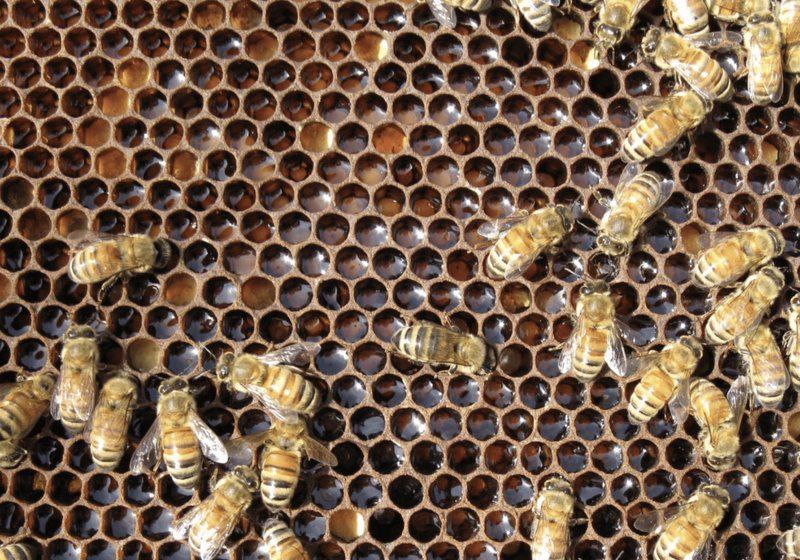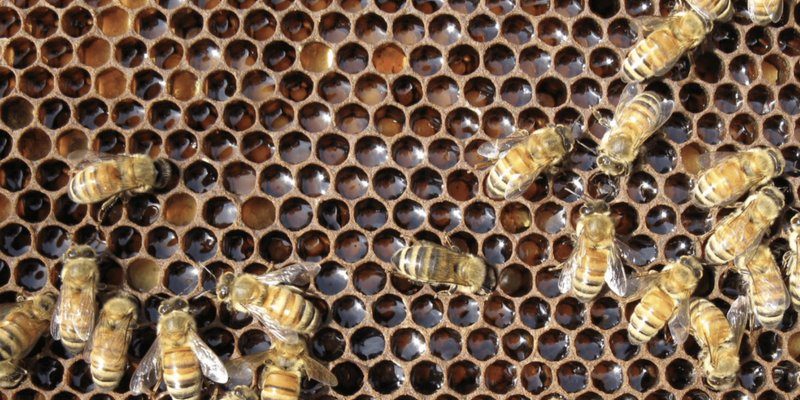
Picture a bustling city, but instead of humans and cars, you have thousands of tiny bees working together in harmony. This is the world of honey bees! They are social insects that thrive in colonies, and understanding their habitat and nesting behaviors can help us appreciate their role in our ecosystem. So, grab your favorite cup of coffee, and let’s explore how honey bees build their homes and why that matters to us.
Where Do Honey Bees Live?
Honey bees are found almost all over the world, except for places that are extremely cold or barren, like the Arctic. They thrive in diverse environments, ranging from lush gardens to open fields and forests. The key to their habitat is availability of flowers, as these provide the nectar and pollen that honey bees need to survive.
You might be surprised to learn that honey bees prefer warmer climates. They’re most commonly found in regions that experience moderate temperatures. Why is that? Well, bees are cold-blooded, so they rely on warmth to function efficiently. When temperatures drop, honey bees become less active, which can impact their ability to forage for food.
Also, honey bees create their hives in areas that provide shelter from the elements. They often choose places like hollow trees, rock crevices, or even inside human-made structures. This choice helps protect them from bad weather and predators. So, the next time you spot a bee buzzing around your garden, think about just how important that space is for their survival!
The Structure of a Honey Bee Colony
A honey bee colony is an incredible example of teamwork and organization. Each colony typically consists of one queen, hundreds to thousands of worker bees, and a few drones. The queen is the star of the show—she’s the only bee that lays eggs. Worker bees, on the other hand, take on various jobs like foraging for food, taking care of the young, and defending the hive.
The intricate structure of the hive plays a crucial role in the colony’s success. Honey bees build their nests using wax, which they produce from special glands on their bodies. The wax is shaped into hexagonal cells that form honeycombs. This design is not just for looks; the hexagon is the most efficient shape to store honey and pollen while maximizing space.
You might be wondering why they go through all this trouble. The honeycomb provides an ideal environment for storing food, raising young, and regulating temperature within the hive. In fact, honey bees can control the internal temperature by fanning their wings to circulate air, much like a tiny air conditioning system!
Nesting Behavior and Building Hives
When it comes to building their nests, honey bees follow a specific process. First, scout bees search for suitable sites. They look for areas that are high enough off the ground to avoid predators and with enough space for the colony to grow. Once a good location is found, the scout bees perform a little dance back at the hive to share the news with the others. This is known as the waggle dance—a fascinating way bees communicate!
Once the decision is made, the colony begins constructing the hive. They start by collecting resin and wax from nearby plants to create a sturdy foundation. The worker bees chew the wax to soften it before shaping it into those iconic honeycomb structures. It’s like nature’s version of building a skyscraper, all without any blueprints!
After the hive is built, the queen starts laying eggs in the wax cells. It’s a remarkable sight as she can lay up to 2,000 eggs a day! The worker bees take care of the eggs, feeding them and keeping the hive clean. This nurturing behavior is key to ensuring the survival of the next generation, and it shows just how strong their teamwork is.
The Importance of Habitat for Honey Bees
You might be wondering why understanding honey bee habitats matters. Well, honey bees play a crucial role in our ecosystem. They are pollinators, which means they help plants reproduce by transferring pollen from one flower to another. This process is essential for producing many fruits, vegetables, and nuts that we eat every day.
However, honey bee populations are facing significant challenges. Habitat loss due to urbanization, pesticide use, and climate change are all threatening their survival. When their habitats are disrupted, it can lead to a decline in bee populations, which ultimately affects our food supply and biodiversity.
Creating a bee-friendly environment is vital. Simple actions, like planting wildflowers or leaving a corner of your garden untouched, can provide honey bees with the resources they need. By preserving their habitats, we’re not just helping the bees; we’re also supporting a healthier ecosystem for all living beings.
Common Nesting Problems Honey Bees Face
Even though honey bees are resilient creatures, they do encounter various challenges when it comes to nesting. One of the most common issues is finding a suitable location. If bees cannot find a comfortable, safe spot, they may struggle to thrive.
Another hurdle is competition for resources. In some areas, honey bees might find themselves competing with other species, like bumblebees or even wasps, for food and nesting sites. This competition can lead to reduced foraging success and ultimately affect colony health.
Additionally, environmental factors, such as severe weather or habitat destruction, can create problems for bee nesting. Heavy rains or strong winds can damage their hives or wash away the flowers they rely on for nectar. It’s important to recognize these challenges to understand how we can help honey bees thrive.
How You Can Help Honey Bees
Now that we’ve explored the fascinating world of honey bees and their nesting behavior, you may be wondering how you can make a difference. Fortunately, there are plenty of simple ways to support these amazing creatures!
– Plant Native Flowers: Choose flowers that are native to your area and bloom at different times throughout the season. This will provide bees with a continuous food source.
– Avoid Pesticides: Pesticides can be harmful to honey bees. Consider using natural pest control methods instead.
– Create Bee Habitats: Leave a small area of your garden untouched, with wildflowers and native plants. Bees love these more natural environments!
– Support Local Beekeepers: Purchasing honey and other bee products from local beekeepers helps promote sustainable practices and supports the bee population.
By taking these steps, you’re contributing to a healthier environment not just for honey bees but for all pollinators. Remember, even small actions can have a big impact!
Honey bees are remarkable creatures that play a vital role in our environment. By understanding their habitat and nesting behavior, we can appreciate their struggles and triumphs. With their incredible teamwork and unique way of building homes, honey bees remind us of the importance of community and cooperation in nature.
Ultimately, we all have the power to make a difference for these beautiful little pollinators. By advocating for their habitats and supporting local efforts, we can ensure that future generations continue to enjoy the sweetness of honey and the beauty of blooming flowers. So, let’s raise a toast (of honey tea, perhaps) to our buzzing friends and protect their enchanting world!

